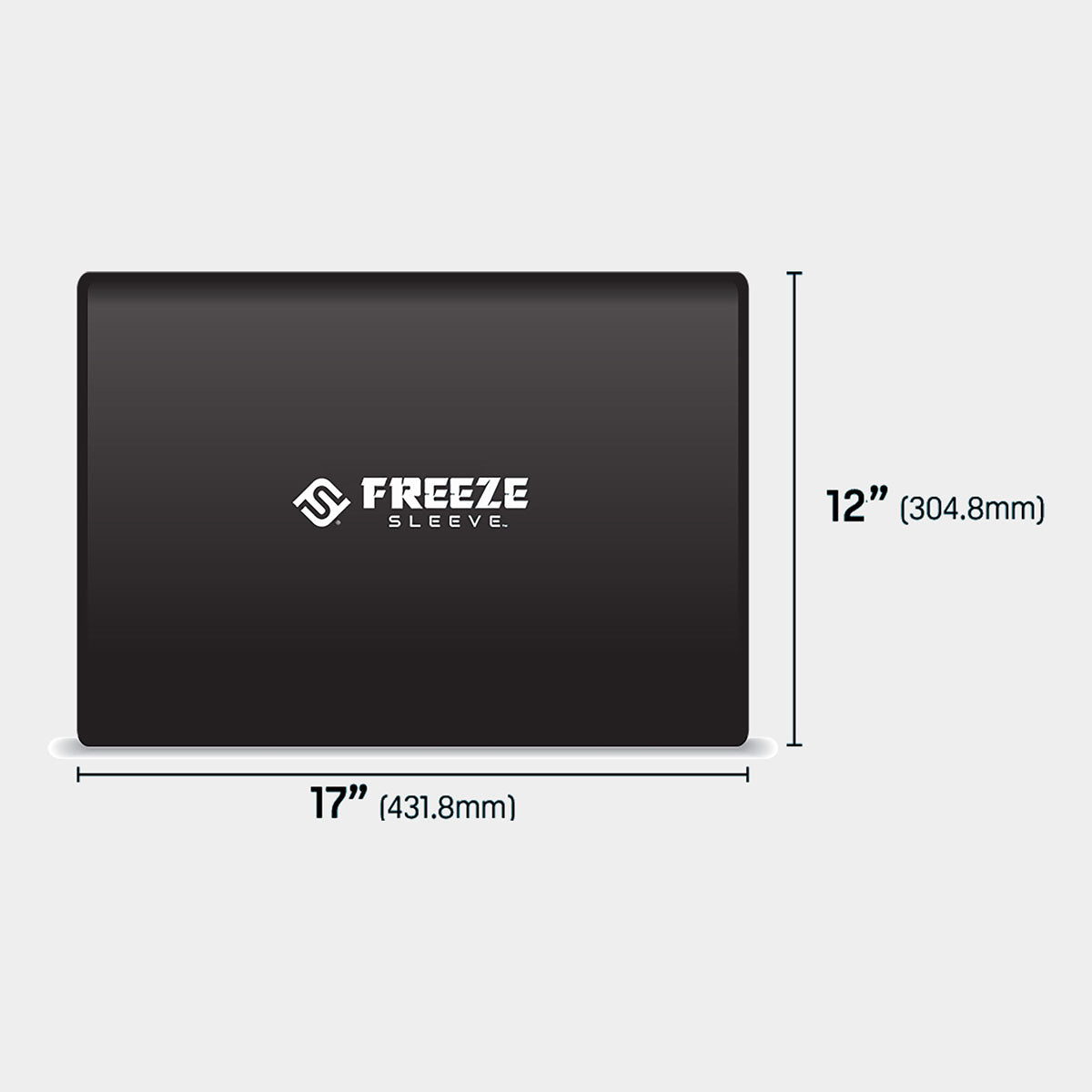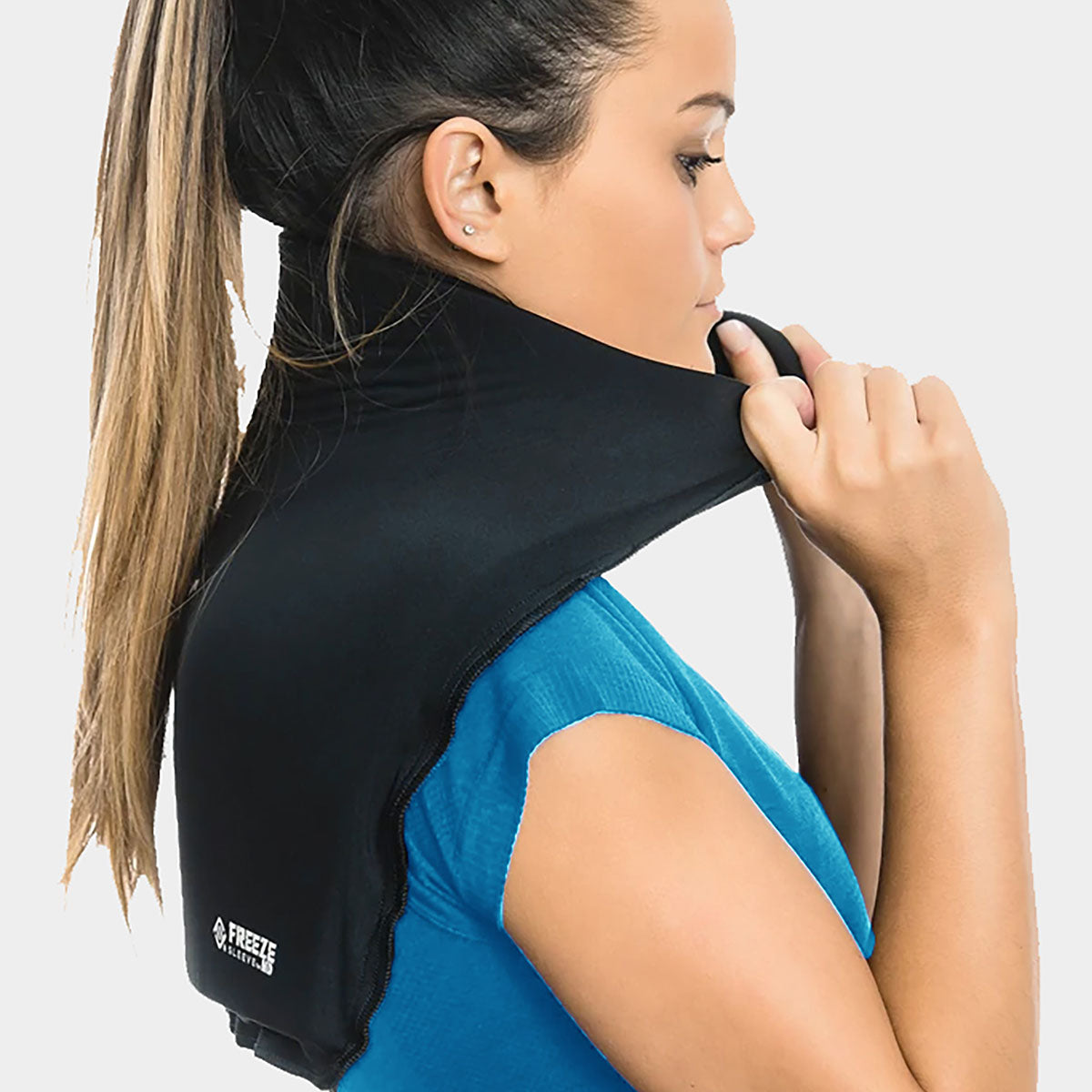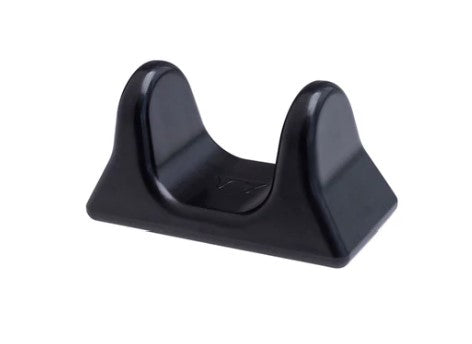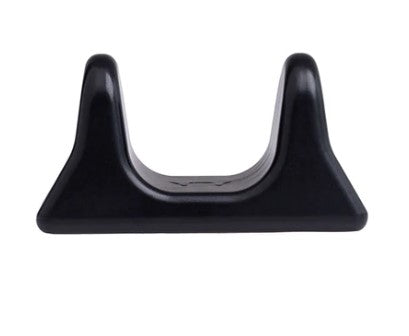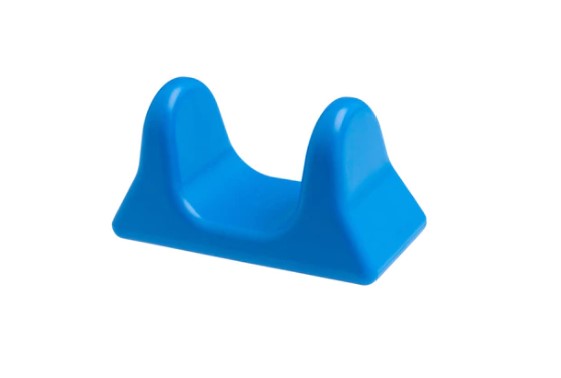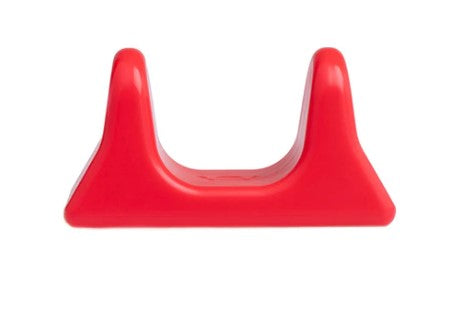Tendinopathy is one of the most frustrating things to be dealing with as a lifter. It requires load to improve, but the wrong dosing can leave you feeling completely inflamed and unable to do much for a hot minute. Tendon pain can be debilitating depending on how irritable and severe it is, and those who have felt it will echo me when I say, "When it becomes chronic, it's the monkey that's latched onto your back." Two areas in particular that people have reached out to me recently about include patellar and/or quad tendon pain, and adductor tendon pain (which I wish I wasn't so familiar with) with squatting. Last week, I got a really interesting email from someone dealing with what became chronic adductor tendon pain. What made this email especially interesting to me as a clinician was able to sort of mirror this particular athlete's progression on a tissue level, with an overlay of concepts such as chronic pain, positional insufficiency, and dose-response to exercise. His learning experience can be invaluable to you.
RECENT: The Most Underrated Exercise You’re Not Doing for Shoulder Health
This particular athlete initially injured himself late in 2018 and had a suspected labral tear in conjunction with adductor tendinopathy. This initially left him with such little control over the muscle that he felt like it was "dead." He followed a pretty-well-thought-out rehab plan initially and was back to heavy lifting earlier this year. But he never felt that the tendon was quite right and kept experiencing setbacks (re-strains) of the tendon, which he attributed to overtraining in one form or another. He did a lot of things right, and I'll get more into that later. Still, when it comes to returning an intermediate to advanced lifter to a heavy compound, there are often more factors at play than we initially think. Perfect mechanics probably aren't enough to get you back to where you need to be.
Background on Tendinopathy/Tendon Degeneration/Pain
It's important to realize that treating a muscle tear and getting back under the bar is a LOT different from treating a tendon issue. The tissues are inherently different from both a structural and a neurological standpoint. If you go to a doctor, physio, chiropractor, or Dr. Google and there's talk of "tendinopathy," basically what that means is that there's a change to the tendon structure. The important part here, for most lifters, is that structurally, chronic tendinopathy or tendinosis differs from acute in exactly how the tendon is changed. Therefore the degree to which our "strongest" collagen is replaced with "OK for now but not as strong" collagen (Type 1 and Type 3). I'm going to bet that most of us who are interested in this article are dealing with something more in the "chronic" category. For ease, I'm going to say that you fit in this box if your tendon pain has > 4 months duration. It's the kind of situation faced by the athlete above. Things improved just enough to be a tease, followed by continued re-irritation. What research shows is that there are multiple mechanisms at play in chronic tendon pain: One is structural, and the other major one is central (or brain dictated). Structurally, chronic tendinosis or tendinopathy is marked by changes in the "internal" portion of a tendon. It's like where the doughnut hole is in the donut, with some changes taking place peripherally as well. More acute, on the other hand, is marked by the actual doughnut having a change in structure and collagen type and, therefore, collagen strength. The central mechanism I mentioned is based more on some of the neuroscience behind pain, as well as the associated changes in our nerves that either increase or decrease the sensitivity to pain.Local and Central Mechanisms of Control
A change in brain activity in chronic tendon pain is one of the biggest determining factors in what maximal contraction is permitted. It's not the tissue itself. Hang with me here because this is important for you to understand. Pain isn't necessarily a function of input. It is more easily explained as a whole bunch of information regarding heat, position, tension, local chemical irritation, and a LOT of other factors, all getting sent to the brain. The brain then executes what it believes to be the best option based largely on the need for survival and safety, via threat perception. It does this by executing a decision (like taking your hand away from a hot stove, or "keep this muscle REALLY tight!") and by releasing different chemicals (largely endogenous opioids) that affect the nerves responsible for ultimately controlling the "output," or movement, sensation, and many other things. The total net effect of an area, meaning what the nerves are being told locally (the "input" from tissue) and the release of either inhibitory or excitatory chemicals from the brain, are a huge part of determining what we feel: pain.What you need to know is how sensitive we are to these chemical signal changes, which hugely depends on our experiences (and even thoughts and cues, positive and negative).
For someone who has a chronic level of pain, continued re-irritation of the area can significantly influence the sensitivity level, and even correspond to activity in the brain that is responsible for thoughts and emotions. I'm in this category, too, and it's taken some HARD lessons for me to figure out just how to move forward. Ultimately, our body responds to what tissue tells it and acts in what it believes is our best interest. Your plan on changing this needs to involve providing good, non-irritating experiences to both allow the tendon to adapt. Tendons NEED load to remodel appropriately! Stay at an appropriate threshold or level of pain/irritation to allow changes in the sensitivity level of the neurons in the area.
Some pain can actually be a good thing or a physiological "eustress." It's important to recognize that although I generally preach that position and leverages are a big part of why pain develops, there are times where perfect mechanics won't solve your problem… and that's OK. What's interesting is that the chronicity of pain (and partially, the summation of our experiences that shape the brain) rather than the intensity seems to be the driving factor in determining the threshold of control via changes in the motor pattern in the brain. This is largely because our nervous system (and all of the chemicals and corresponding receptors that drive how it works) has the trait of plasticity or adaptation.
What This Lifter Did Right and Why It Wasn't Enough
The lifter mentioned earlier could tell me the exact dosages, frequency levels, and pain levels before and after certain exercises or sessions throughout the duration of recovery.He did a LOT of things correctly:
- Addressed global influences: He knew that the adductors and abdominals have to work together and that he was having some poor glute control. He addressed postural issues and stability, and he added popular exercises to integrate regions together, like Copenhagen planks.
- Tracked dosages: He could tell me exactly what set and rep scheme he did week to week and how it progressed or changed. He did things like target rep goals (if he could do only 10 of one exercise, he worked up until he could do 15 over the course of a few weeks).
- Built up his compounds slowly.
- Changed exercises for unilateral strengthening: One of the biggest things he did that helped his stability (and in his words, address the neurological insufficiency overprotecting the tendon) was to incorporate unilateral work. So many kudos for him. The more stability an area has, the more that "good" info gets sent to the brain, which permits increased contraction strength.
- Not enough recovery time via increased frequency. At one point, he transitioned to full-body, Rippetoe-esque workouts that he believes didn't afford his tendon enough recovery time. I 110 percent agree with this for a few reasons. I will give you a very basic tidbit on pain science, especially pain that's no longer an acute injury. You absolutely need the opportunity to gauge how your body responded to the stimulus applied before you determine your next steps. Often that won't occur for 24-48 hours. Every "interaction" we have with the gym is a molding experience for our nervous systems. From a purely tissue-based standpoint, tendons will require 48-72 hours to recover… even when pain isn't an issue.
- Permitting poor positions in rehab-based exercises. I don't want to preach "anterior pelvic tilt is bad" because there's a degree that is very appropriate, but when it occurs as a result of overactivity (especially in big, strong, protective erector muscles in the back) to help to guard an area, it's definitely not ideal, especially in an athlete dealing with a labral tear/adductor tendinopathy combination. This particular athlete recognized that as he got hungry for increased rep ranges and new exercises. He allowed over-guarding through big, strong erectors to take over and change the position of his irritable structures, as well as the mechanical advantage (or disadvantage) of muscles like glutes and obliques.
- Pushing through what was probably too much pain: Again, I agree with this 100 percent. It's hard to find the right line to push up to, especially when you're trying to maintain a consistent training schedule. Some increases in pain are OK, maybe two points on a 0-10 scale 36ish hours later, but if there's a question or doubt in your mind, you did too much. No one has ever regretted taking his or her time and going slow in progressing through tendon issues.
My Top Variables to Control and How to Implement Them
Incorporating positions of insufficiencyDon't get me wrong—I love Copenhagen planks as much as the next physio (although I'm curious about where the recent obsession on Instagram has come from). Relying strictly on frontal plane control-based isometrics or small movements (and even eccentrics) isn't enough to rebuild resilience from a tissue standpoint and to improve neurological permissions. Positions of deep flexion, in particular, can be incredibly irritating on the adductor, and moving in the sagittal plane (flexion/extension) is SO important for maintaining control because throughout the flexion and extension ranges of motion, the role of the adductors in controlling (eccentrically and concentrically!) rotation changes. More than that, I'm a powerlifter. I want to squat. I need to be strong at the bottom. Period.
My change: Incorporate exercises utilizing an increasing degree of flexion. This doesn't mean only split squats, lunge variations, or single-leg pressing variations. A lot of lateral-based movements will require a significant degree of hip flexion to actually load the hip with good mechanics. It's easy to increase the intensity by adding partial reps, paused reps, and tempo to increase the relative load without changing the absolute load.
Tendon neuroplastic training
This is a fancy way of saying that our nerves change things, and manipulating that system can provide an opportunity for more varied and stable movements. Isometrics are known to have an analgesic effect on the tendons (generally for up to 45 minutes, provided that the contraction is with enough force to stimulate the muscle-tendon units). Also, a study that came out a few years ago looked at the role of the brain in regulating pain. What they found was that as much as isometrics had an analgesic effect, incorporating metronome counting or other mentally stimulating activities changed the allowed maximal force production produced by the affected tendon while concurrently altering the brain's activity (I hope you're seeing this theme of central/brain-based control being important). Anyone who has dealt with tendon pain knows the frustration of feeling like there's a weakness that you can't fully describe. Traditional neuroplastic training would involve an isometric of sufficient force with a mentally stimulating activity followed by training.
My change: For someone who is out of the acute stages of pain, especially athletes or powerlifters who are chronically, although not acutely, used to handling a heavier load, you may need to get a little more specific with how this is performed. This, to me, is where your movement prep can include a short progression from isometric against an object, to "isometric" with more degrees of freedom, like a paused goblet squat. It's important to note that this must stay pain-free and should NOT produce shaking or instability. The whole purpose of this is to allow for a greater degree of control over the area and, again, send "permissive" signals to the brain.
Recovery Time and Structure
This is where the programming hits home, and there are a million ways you can go about programming. But the biggest thing for you to remember as an athlete is that the session must stay a net positive psychologically/emotionally and physically, and your BIGGEST goal is to string together as many pain-free (or acceptable) levels as you can. More and more literature is exploring the role of our thoughts in chronic pain (because, again, the brain releases chemicals that affect the nerves). My best advice would be to spread your training out with varying degrees of stimulation to address the recovery need, or to change your training style completely. I told the athlete in my email that his goal needed to string together as many sessions where he wasn't thinking about his tendon as much as he could. That is the most simple, straightforward way to success.My change: Having dealt with a full tendon rupture (and a bone fragment where it tried to scar down), I'm ALL too familiar with the cycle of re-irritating something that's already been a monkey on your back. My own training took a huge hit when it seemed like every six to eight weeks, there was another tweak that left it tough for me to walk or go up stairs for a few days. I started approaching my sessions with different goals completely. I had no need to push strength, and I found that the more I greased a movement, the more comfortable I could become and go HARD on my last set. I found myself frequently asking my husband, "That felt fine! Should I do one more set?" And the answer was almost always, stop while you're ahead. My training was structured to have one heavy-ish day with higher intensity via weight; one moderate day, where intensity was delivered via other variables, such as volume and tempo; and one day focused entirely on control and recovery/blood flow, usually done at the end of an upper training day.
MORE: Serious Training Considerations for COVID-19
You can structure this similarly. Start by making a list of your implements (rack, landmine, platform, any machines you have access to) and different ways you can modify via accommodating resistance, tempo, etc. From that list, highlight one to two movements that you know you can train somewhat hard without an increase in pain or the risk of reinjury. Go back to your list and highlight, in a different color, three to four movements that you can't load heavy but you know you can do. Then, pick three to four movements you know you suck at, like single-leg RDLS, single-leg hip thrusts, hip airplanes, whatever. You can start to lay out your program knowing that on any given day, your goal is to drop another quarter in the bank of "sessions that I successfully trained without reinjury."
Final Takeaways
See how you do the first week of programming before you commit to the whole block. I know how nice it can be to have a plan, especially in the context of pain that you've been dealing with for quite a while. Write your first week to 10 days, and gauge your recovery. Jot it down in the place where you record your training so that you know exactly how your body handled it."Perfect" mechanics probably aren't enough. I hate the idea of "perfect" mechanics anyway because they're so vastly different for different body types and structures. Finding YOUR perfect takes time and will almost always continue to evolve. You need to monitor your response to specific exercise dosing in terms of load, sets, reps, and total volume for the week. Remember that, especially in the context of chronic pain, the brain's memory and motor programming is going to be a huge determinant in how much force you'll be permitted to produce. Give it good input as many days as you can, and this will be a distant memory in the future.
General rule: 24-48 hours of only small increases in pain. You'll know if you did too much.
Roughly 72 hours of recovery, especially for tendons. I've heard some physios approach muscle and tendon tears in the same way, and honestly, you just can't. The tissue is entirely different.
Wave intensity throughout the week. But be systematic from week to week.
It is 100 percent OK to do the same weight and volume as you did last week OR LESS. I love progressive overload, but chronicity trumps an acute workload every time. Your ability to string together six weeks of decent sessions (with a potential ego check at the start) will do FAR more for you than being absolutely married to extra weight, an extra rep, or an extra set every day you train. It is absolutely helpful, but it is also secondary to consistency.
This was a lot of info but hopefully it helped you to understand why you just can't seem to get around your chronic tendon issues. I think this is particularly relevant for the squat because it encompasses such a huge range of motion and control demand on the adductors. As always, I'm available to answer questions, so please don't hesitate to reach out. You can email me at Dani@MergePerformancePT.com.

















































